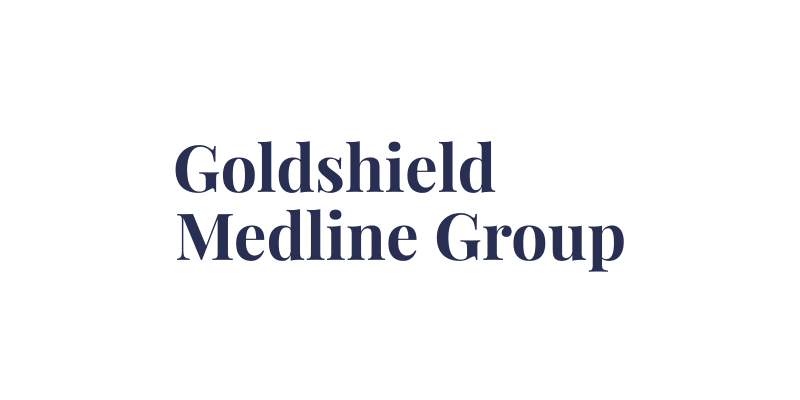
Goldshield Medine
Cardiovascular risk for veterans – a call to arms
Featuring Dr.Amy · RohsCFeaturing 4D Medical TM · July 10 2025 · 4 min read
Many veterans continue to face significant health challenges long after their military service, with cardiovascular disease representing a particularly critical concern. Studies indicate that veterans are at substantially elevated risk for heart-related conditions, underscoring the urgent need for targeted interventions and advanced medical solutions. In this article, Dr. Amy Rohs, Physician Clinical Champion – Government Sales and Solution, discusses how innovative technologies are being deployed to effectively address this public health issue and enhance the long-term well-being of those who have served our nation with distinction.
At-a-glance:
- Veterans are at a significantly higher risk for cardiovascular disease, particularly due to combat-related trauma and stress.
- Partners are working together to provide Veterans with innovative technologies to effectively detect and manage heart disease.
- A cardiovascular workspace platform is now active in 65% of VA Medical Centers (VAMCs), offering a powerful, centralized solution for managing cardiology imaging and data.

Since the U.S. military draft officially ended on January 27, 1973, the nation has relied on the service and dedication of an all-volunteer military force – brave individuals who have stepped forward not out of obligation but from an unshakable sense of duty. They have served across the globe, from the deserts of the Middle East to Afghanistan’s mountains, and into the vast depths of seas and skies. These men and women have stood in harm’s way, protecting us, supporting one another and caring for people worldwide. They have faced unimaginable hardships in hostile environments, enduring physical and emotional stress far beyond what many of us can imagine. And they have given so much of themselves with the hope that, when their service came to an end, they could return to civilian life, find peace and rebuild the lives they fought so hard to protect.
Sadly, for far too many veterans, the hope of peace and fulfillment remains just that—a distant dream. The scars of war do not simply fade with the retirement of a uniform. Veterans often bear enduring risks to their health, both physical and emotional, extending well beyond their years of active duty. Their bodies and minds are permanently shaped by their service, and all too often, the toll of those experiences persists long after their missions have ended.
‘’The scars of war do not simply vanish with the retirement of a uniform. Veterans carry lasting risks to their health – both physical and emotional – that stretch far beyond their time in service.”
Dr. Amy RohsPhysician Clinical Champion – Government Sales and Solutions
The Department of Veterans Affairs (VA) deserves recognition for its efforts to research and address the cardiovascular (CV) health of our Veterans. Through groundbreaking studies, the VA has highlighted an urgent issue – Veterans face a significantly higher risk for cardiovascular disease (CVD) than the civilian population [1].
This is not just a statistic but a painful reality. My brothers and sisters who fought to defend our country are now battling for their own hearts. Research shows that combat deployments and the associated trauma and stress are linked to new-onset heart disease [1], particularly among younger Veterans [2]. This is not an abstract concept; this is the insidious consequence of the intense emotional and physical tolls of war [2].
The data is alarming. Veterans are at greater risk of CVD, and their risk will not diminish over time. Female Veterans, one of the fastest-growing groups in the VA system [3], are especially affected. A 20-year review revealed that female Veterans have not seen the same improvements in cardiac disease mortality as their civilian counterparts [3]. This is not just a health concern; it’s a crisis.
‘’Veterans are at greater risk of CVD, and their risk will not diminish over time.‘’
We are committed to listening and responding to the needs of the Veteran community. We understand their concerns and are dedicated to delivering innovative, life-saving technologies. Our mission is clear: to provide Veterans with the tools, care, and expertise they need to prevent and treat cardiovascular disease, helping them thrive in life after their service.
To bring this battle to the frontlines, efforts are underway to equip Veterans with advanced imaging technologies and remote resources that enable earlier detection of heart disease and help prevent its progression. A centralized cardiovascular workspace is now active in 65% of VA Medical Centers (VAMCs), providing a powerful platform for managing cardiology imaging and data. This technology enhances efficiency but, more importantly, is saving lives. By integrating tools such as electrocardiograms, echocardiograms, vascular ultrasounds, and nuclear cardiology into one seamless system, care teams can make faster, better-informed decisions, ensuring Veterans receive timely and coordinated care.
‘’Our Philips IntelliSpace Cardiovascular Workspace is now active in 65% of VA Medical Centers (VAMCs), providing a powerful, centralized platform for managing cardiology imaging and data.‘’
By partnering with 4DMedical™, we can push the limits of innovation to assist with earlier diagnosis and intervention. 4DMedical’s CT Suite technology can detect coronary artery calcification (CAC™) through existing chest computerized tomography (CT) scans – something that was usually performed after risk factors had already been identified. Through this breakthrough technology, we can screen for calcification before risk factors even manifest, providing radiologists and cardiologists with the vital information they need to make life-saving decisions.
This approach is proactive, not reactive care. And Veterans’ elevated risk demands that we do more. By integrating imaging technologies into a single CV platform and harnessing every tool to identify cardiovascular disease early, Veterans and their care teams are empowered to diagnose and intervene sooner, better and faster.
This mission is about more than groundbreaking technology – it is about keeping a promise and fulfilling a debt to those who have given so much. It is about making sure that the hearts of our nation’s heroes keep beating strong long after their service ends. It is about giving our Veterans the care they deserve so they can enjoy living in the country they so nobly protected.
‘’This mission is about more than groundbreaking technology…It is about making sure that the hearts of our nation’s heroes keep beating strong long after their service ends.‘’
Adopting telehealth and AI may feel like a leap, particularly in an industry known for being wary of rapid change. But organizations that cultivate a culture of innovation and inclusivity are paving the way for smoother transitions. Leaders who involve clinical teams early, gather feedback and adapt tools to meet real-world needs are not only getting ahead; they’re earning trust and buy-in for the next wave of digital health solutions.
‘’This mission is about more than groundbreaking technology…It is about making sure that the hearts of our nation’s heroes keep beating strong long after their service ends.‘’
Dr. Amy Rohs
Physician Clinical Champion – Government Sales and Solutions
We honor that commitment. We stand with our Veterans, dedicated to fighting for their health just as they fought for our freedom. Together, we can ensure their sacrifices are never in vain and safeguard their hearts, today and always.
- Veterans are at a significantly higher risk for cardiovascular disease, particularly due to combat-related trauma and stress.

Dr. Amy Rohs
Physician Clinical Champion – Government Sales and Solutions

Company
About Us
Our Team
Careers
News & Press Releases
Corporate Responsibility
Products & Services
Product Catalog
Brands We Represent
Request a Quote
Regulatory Compliance
Services & Support
Product Documentation
Contact Us
FAQs
Privacy Policy
Terms & Conditions
Returns & Warranty
Accessibility Statement
Social Media
Subscribe to Our Newsletter

